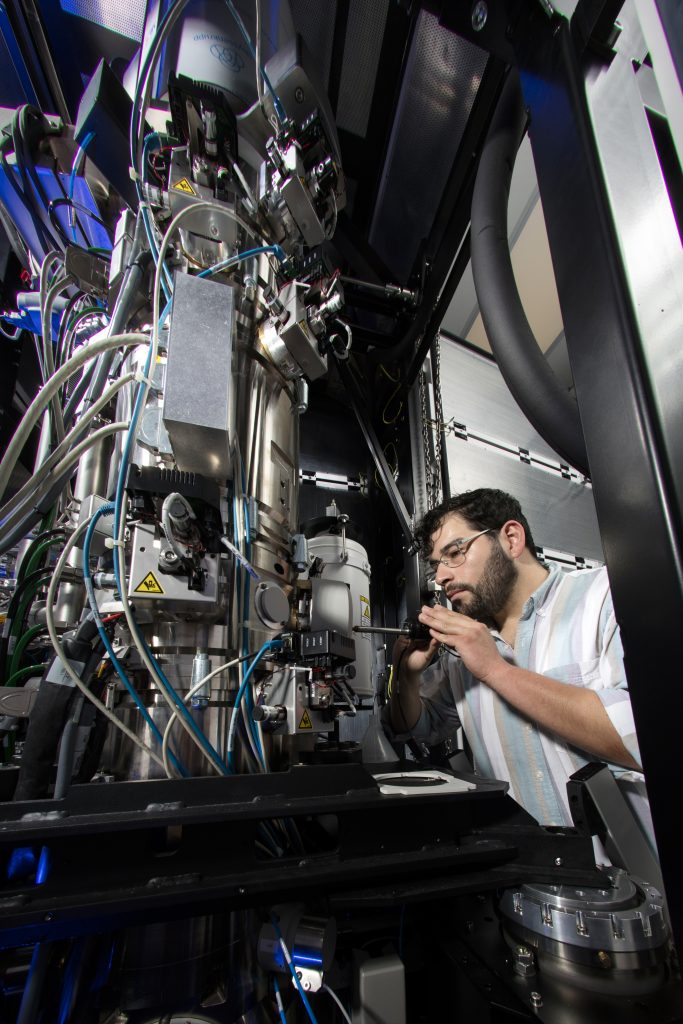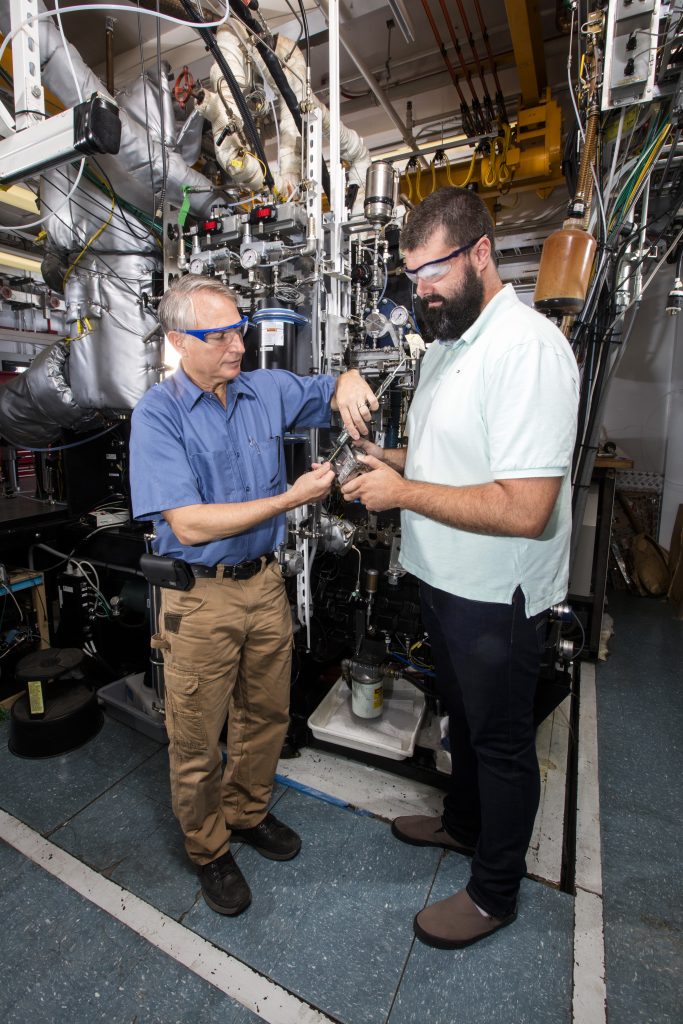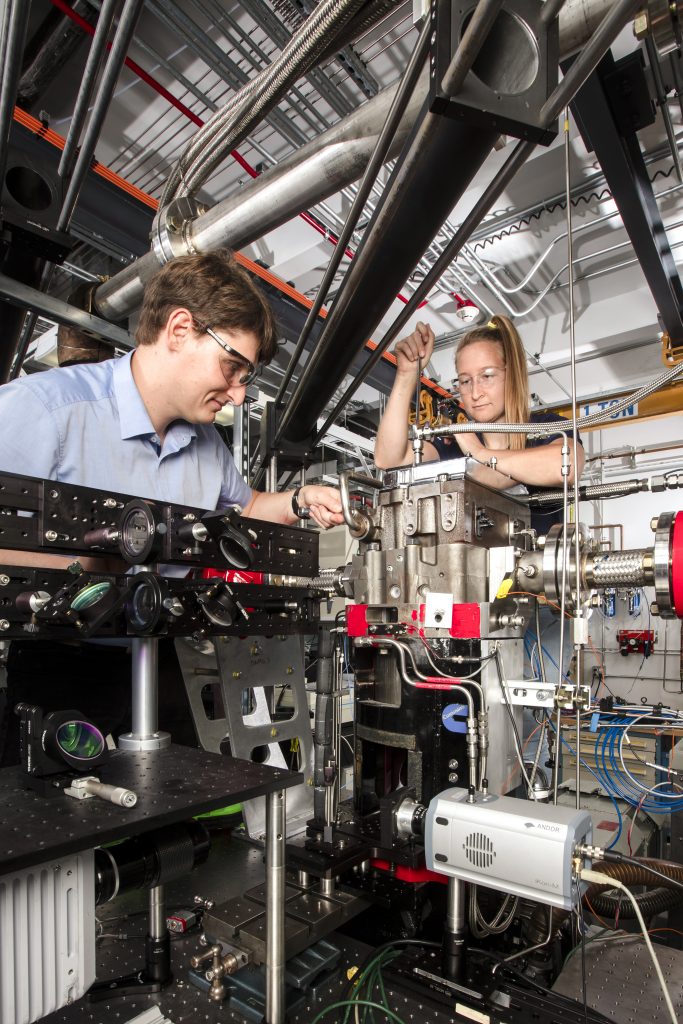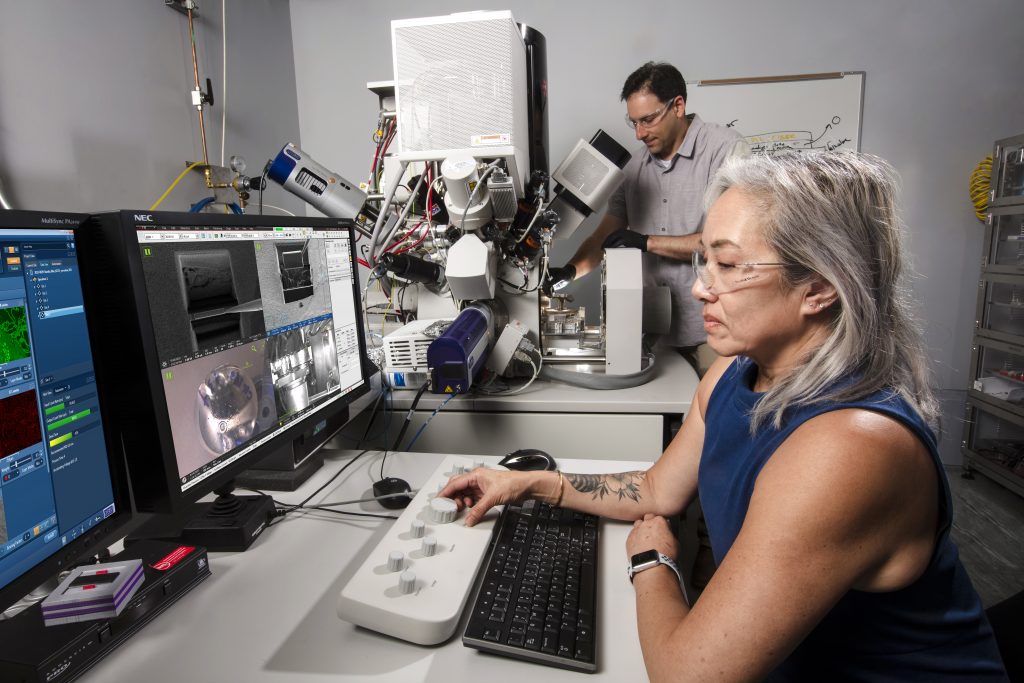Sandia Labs scientists invented and developed ground-breaking scientific and engineering capabilities—both experimental and computational—which laid the foundation for today’s combustion research model. Built in the early 1970s, on the promise that laser beams could be used to interrogate hostile environments, Sandia’s Combustion Research Facility (CRF) is now world renowned for the development of in-cylinder optical probing of internal combustion engines and sophisticated techniques to characterize ultrashort laser pulses, such as FROG (frequency-resolved optical gating).
Complementing our experimental innovations, CRF scientists also develop new computational and theoretical capabilities for chemistry, reacting flows, and uncertainty analysis, as described under Computation and Theory.
The CRF is the birthplace of experimental techniques, such as ion imaging and femtosecond photoelectron spectroscopy, that revolutionized chemical physics. Today, our researchers work on the frontiers of spectroscopic and analytical methods for advanced engineering and experimental chemical physics. We design sensitive and high-resolution optical and laser spectroscopy methods. CRF staff have been instrumental in developing photoionization mass spectrometry for flame analysis, chemical kinetics, and heterogeneous catalysis research. We are an international leader in imaging turbulence-chemistry interactions with high-speed, four-dimensional (spatial + temporal) tomography of reacting flows. We develop new nonlinear coherent diagnostics that can image chemical species and temperatures in challenging environments—high temperatures, near surfaces, in plasmas and in high-pressure fuel sprays—and explore new ways to exploit ultrafast high-powered lasers to control and analyze chemical processes.
As a U.S. Department of Energy Office of Science Collaborative Research Facility, we partner with researchers from around the world to provide practical solutions and foundational understanding that benefit our nation and the world.



